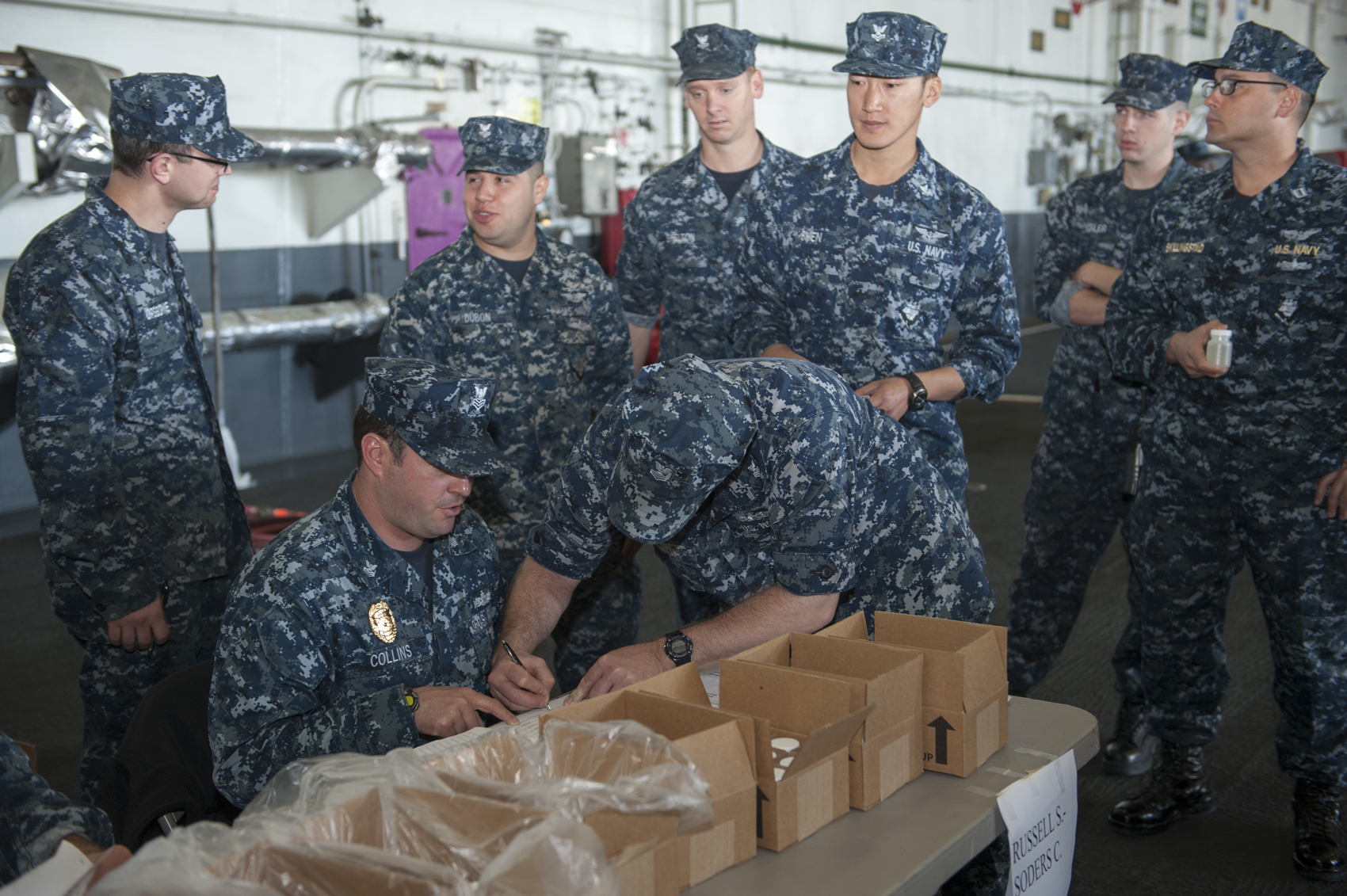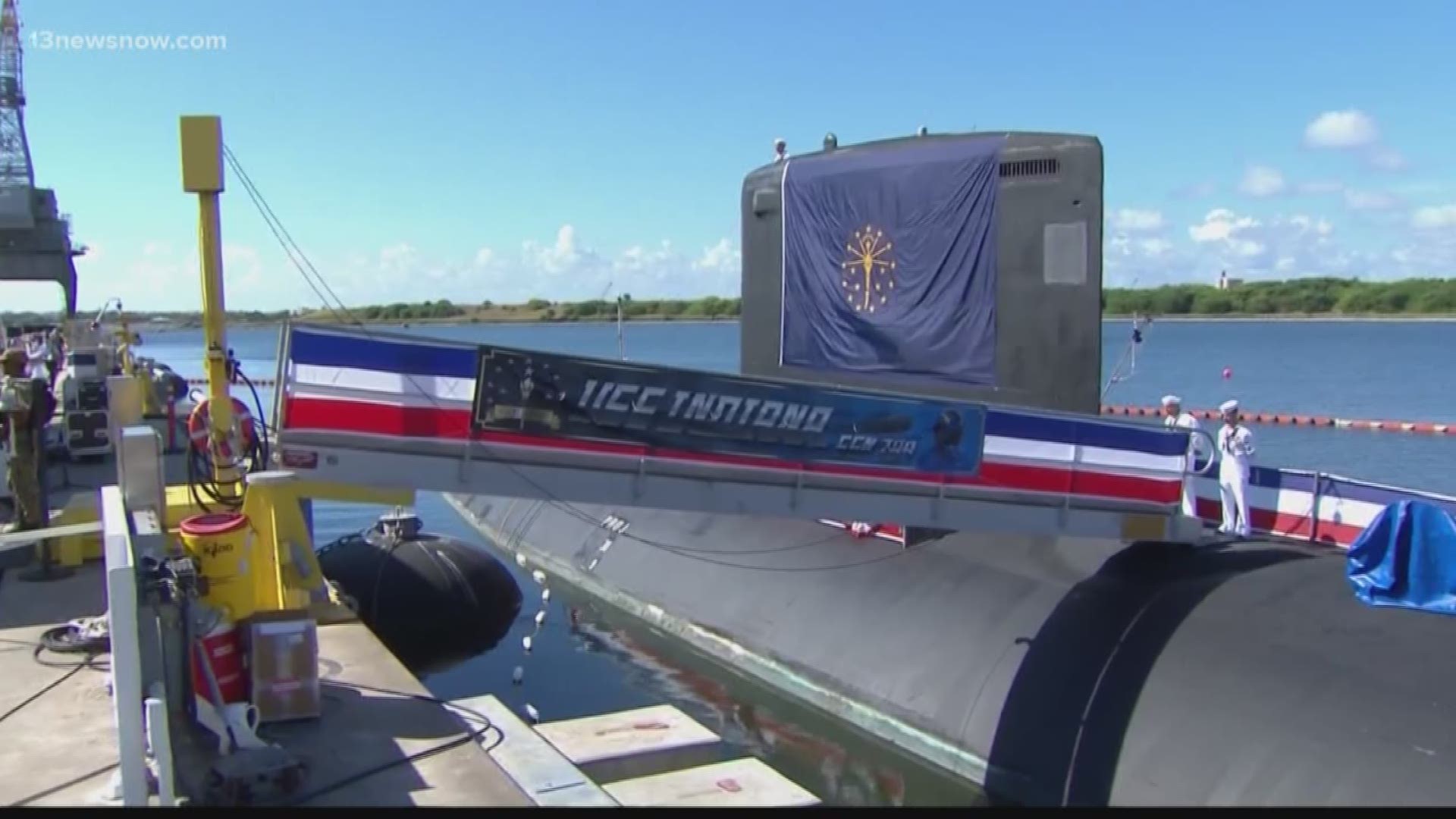(Navy Times) -- Tens of thousands of sailors are going untested for drug abuse each year in violation of the seeming "zero tolerance" drug policy, a startling report warns.
Navy data show that about 12 percent of the service, or more than 46,000 personnel, have not been compelled to provide urine samples for drug testing as is stipulated in the Navy's regs, and that in some cases it's taking up to two years to separate those who test positive, complicating efforts to enforce zero tolerance, the Naval Audit Service concludes.
"The Navy does not have reasonable assurance that service members are free from the effects of drug abuse when service members are not separated after testing positive for illegal drugs and 100 percent of service members are not drug tested," according to the 2014audit service report, obtained by Navy Times. "Undetected drug abuse could undermine combat readiness and jeopardize the safety of Navy service members and the safety of others."
Among five recommendations, the report calls for the Navy to test every sailor at least once a year — a goal the service is still working toward.
The service says it's completed some of the recommendations and is making headway on others. Officials say they're testing more sailors and claim a lower tally of sailors going untested.
"We welcome all information and research that helps inform our work, and consequently the Navy's urinalysis program has been further-strengthened thanks to the 2014 Naval Audit Service report," said Lt. Joe Keiley, spokesman for the office of the chief of naval personnel. "We have successfully implemented three of their five recommendations, boosting our ability as a service to deal with positive drug tests in an efficient manner and we're working hard to meet their other two recommendations."
Assessing the testers
The review set out to determine whether everyone was being tested during fiscal years 2010 and 2011 and whether those who tested positive were separated.
The current policy states that 100 percent of the Navy's end strength must be tested each year.
"The minimum monthly testing requirement is 15 percent of assigned personnel, with a maximum of up to 40 percent of assigned personnel tested," the instruction said. "Commands shall conduct an end of fiscal year unit sweep of all individuals not tested in the course of the year."
But the audit found commands have fallen well short of 100 percent testing required. Unit sweeps, where sailors are drug-tested command-wide, are no longer mandatory for commanding officers and are often overlooked, the report found.
"Although the Navy conducted drug testing for 88 percent of service members in FYs 2010 and 2011, we found that 12 percent of Navy active duty service members were not tested each year," the report said.
Defense Department data indicate that 381,191 people served at some point on Navy active-duty during fiscal year 2010. Of those, 334,988 unique individuals were tapped on the shoulder to provide a urine sample. That leaves 46,203 who went without testing at all.
Though the data showed non-compliance, the audit was at a loss as to why.
"We did not determine the reasons why service members were not tested due to the numerous commands involved in urinalysis testing throughout the Navy," the audit said. "While over 2,200 commands conducted drug testing in FY's 2010 and 2011, it is unknown how many commands did not test service members each year."
The auditors recommended the Navy track annual testing for sailors and the results obtained, a finding officials implemented in September. The service also stipulated it would hire a contractor to assess the drug testing regime for improvements.
The Navy's compliance was boosted by an accounting change ordered by DoD. Keiley quoted a document called the "Status of Drug Use in the Department of Defense," which set a target test rate of 90 to 95 percent for fiscal years 2013 and 2014.
"This allows commands to account for the transition of personnel between components, deployment status, retirements and changes in duty status across fiscal years," he said. "Navy has met this test rate and is on track to meet this test rate in FY15."
The Navy says it is meeting the DoD testing requirements now, even if it falls short of the 100 percent recommended by the audit service.
Some of the discrepancies also stem from accounting rules. The Navy's drug testing results are compared to the average end strength tally, which for fiscal 2010 was 358,445. The Navy stipulates a 99 percent drug testing based on this group.
The Navy says they feel the average end strength number is the most accurate and by that measure, in 2014 they claim a compliance of 99 percent using the average end strength.
"We're proud to say that 99 percent of the Navy's average end strength was tested [in fiscal 2014], well above the target set by the DoD," Keiley said "FY15 continues to be tabulated [in the Navy's drug test database] while test results from the FY continue to be reported."
Separations
The audit service found problems in processing drug separations, often due to a long appeals process, and called for the service to better track them.
"We found that, typically, service members who tested positive for illegal drugs were separated in compliance with the 'zero tolerance' policy," the report concluded. "When service members were not separated, it was because documentation to clear them had not been provided, or because they were allowed to transfer to the Reserves."
The report did not say whether the sailors were allowed to transfer to the selected reserve, which pays sailors in return for drilling days, or the individual ready reserve.
In particular, the auditors faulted the length of time it takes to separate sailors who've tested positive, which can range up to 674 days.
The audit recommended better tracking of the process and the time required to separate sailors, and that the Navy track drug administrative separations better to reduce the time it takes to remove these sailors from the ranks.
Keiley said officials are working on a new instruction to address the separation problems spotlighted by the report.
"We are working to make changes based on the audit recommendation by updating our policy," he said. "That instruction, OPNAVINST 5350.4E is currently being updated and routed for review."


![635856737391004502-635851893845702765-urinalysis.JPG [ID=77273120]](http://cdn.tegna-tv.com/-mm-/521cd80a4fb9f1f1edf37d025629b379daee5bba/r=500x332/local/-/media/2015/12/14/WVEC/WVEC/635856737391004502-635851893845702765-urinalysis.JPG)
